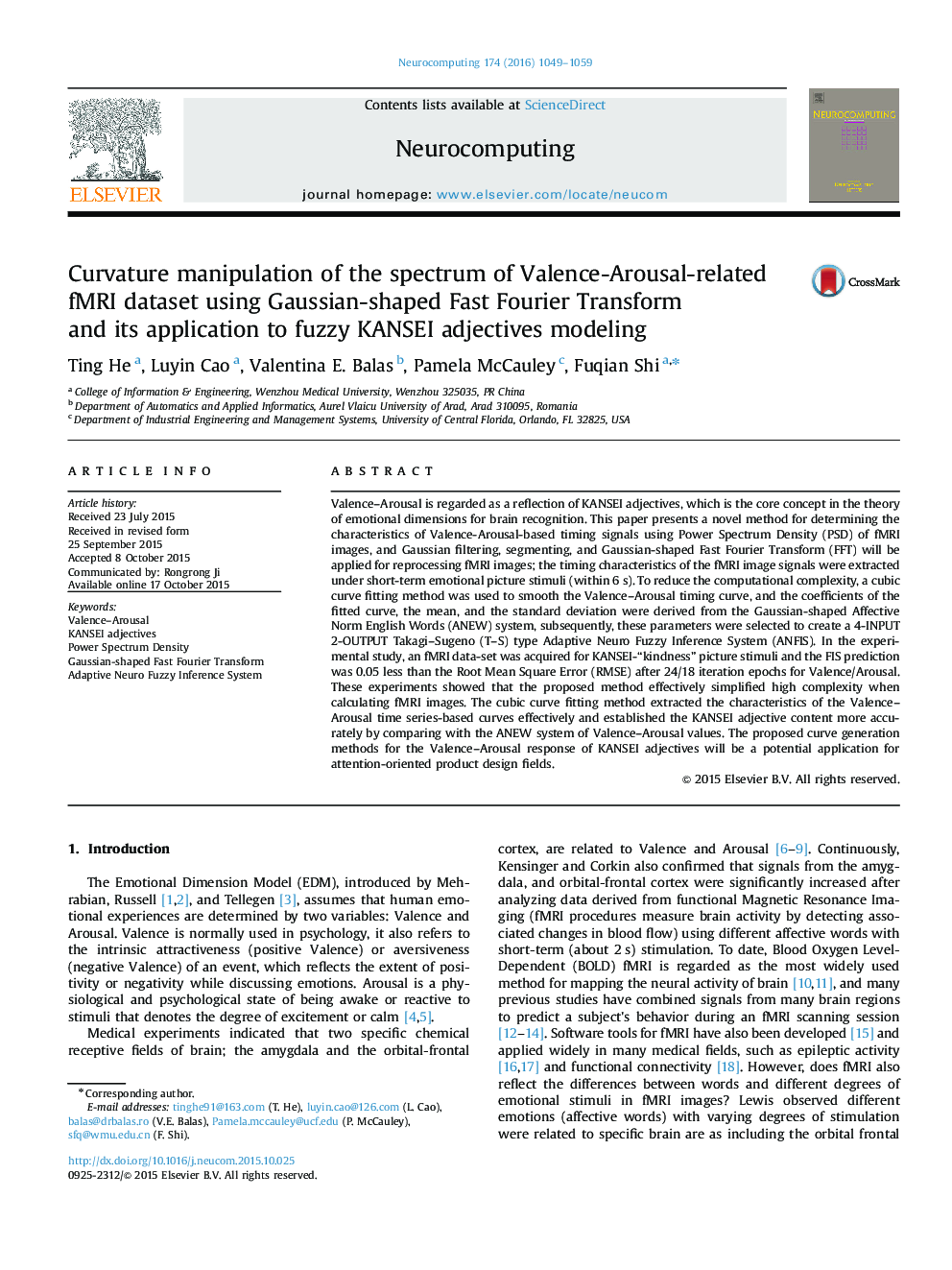| Article ID | Journal | Published Year | Pages | File Type |
|---|---|---|---|---|
| 411638 | Neurocomputing | 2016 | 11 Pages |
Valence–Arousal is regarded as a reflection of KANSEI adjectives, which is the core concept in the theory of emotional dimensions for brain recognition. This paper presents a novel method for determining the characteristics of Valence-Arousal-based timing signals using Power Spectrum Density (PSD) of fMRI images, and Gaussian filtering, segmenting, and Gaussian-shaped Fast Fourier Transform (FFT) will be applied for reprocessing fMRI images; the timing characteristics of the fMRI image signals were extracted under short-term emotional picture stimuli (within 6 s). To reduce the computational complexity, a cubic curve fitting method was used to smooth the Valence–Arousal timing curve, and the coefficients of the fitted curve, the mean, and the standard deviation were derived from the Gaussian-shaped Affective Norm English Words (ANEW) system, subsequently, these parameters were selected to create a 4-INPUT 2-OUTPUT Takagi–Sugeno (T–S) type Adaptive Neuro Fuzzy Inference System (ANFIS). In the experimental study, an fMRI data-set was acquired for KANSEI-“kindness” picture stimuli and the FIS prediction was 0.05 less than the Root Mean Square Error (RMSE) after 24/18 iteration epochs for Valence/Arousal. These experiments showed that the proposed method effectively simplified high complexity when calculating fMRI images. The cubic curve fitting method extracted the characteristics of the Valence–Arousal time series-based curves effectively and established the KANSEI adjective content more accurately by comparing with the ANEW system of Valence–Arousal values. The proposed curve generation methods for the Valence–Arousal response of KANSEI adjectives will be a potential application for attention-oriented product design fields.
